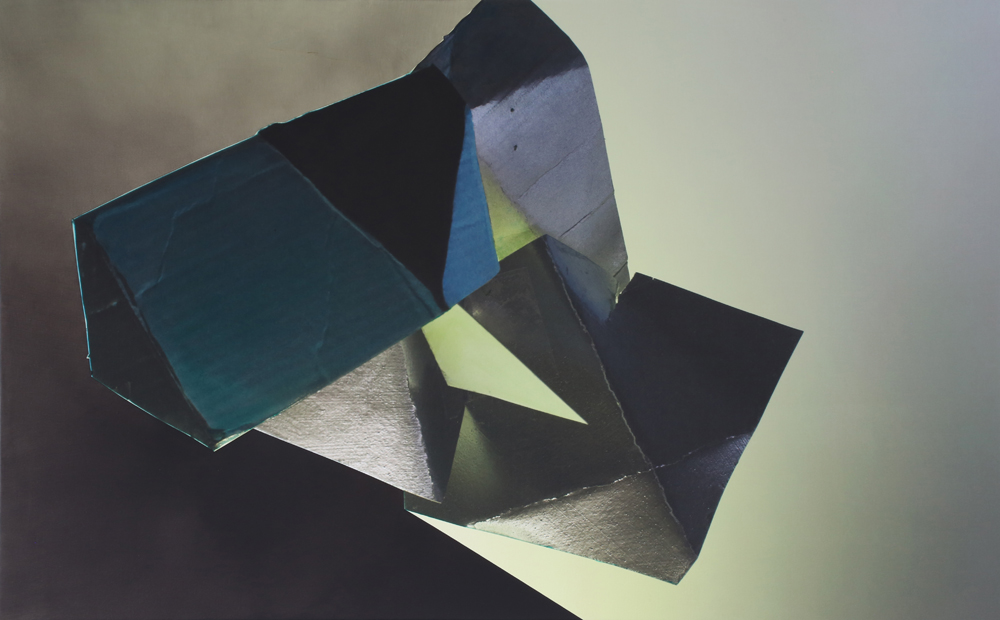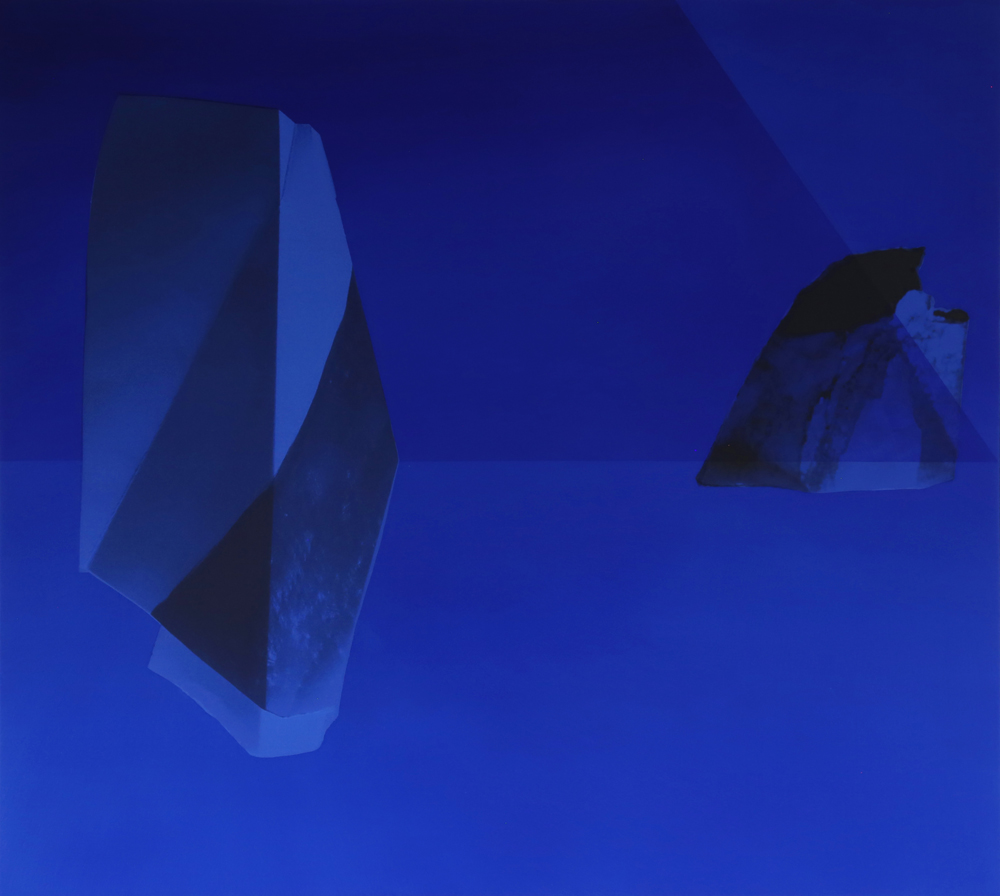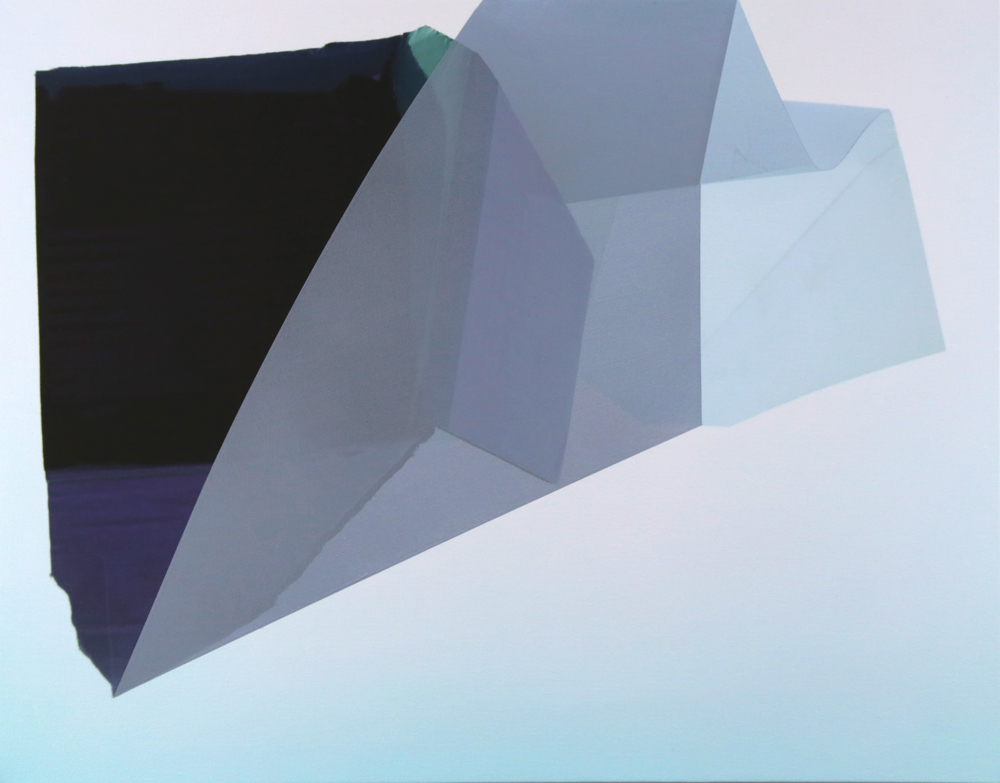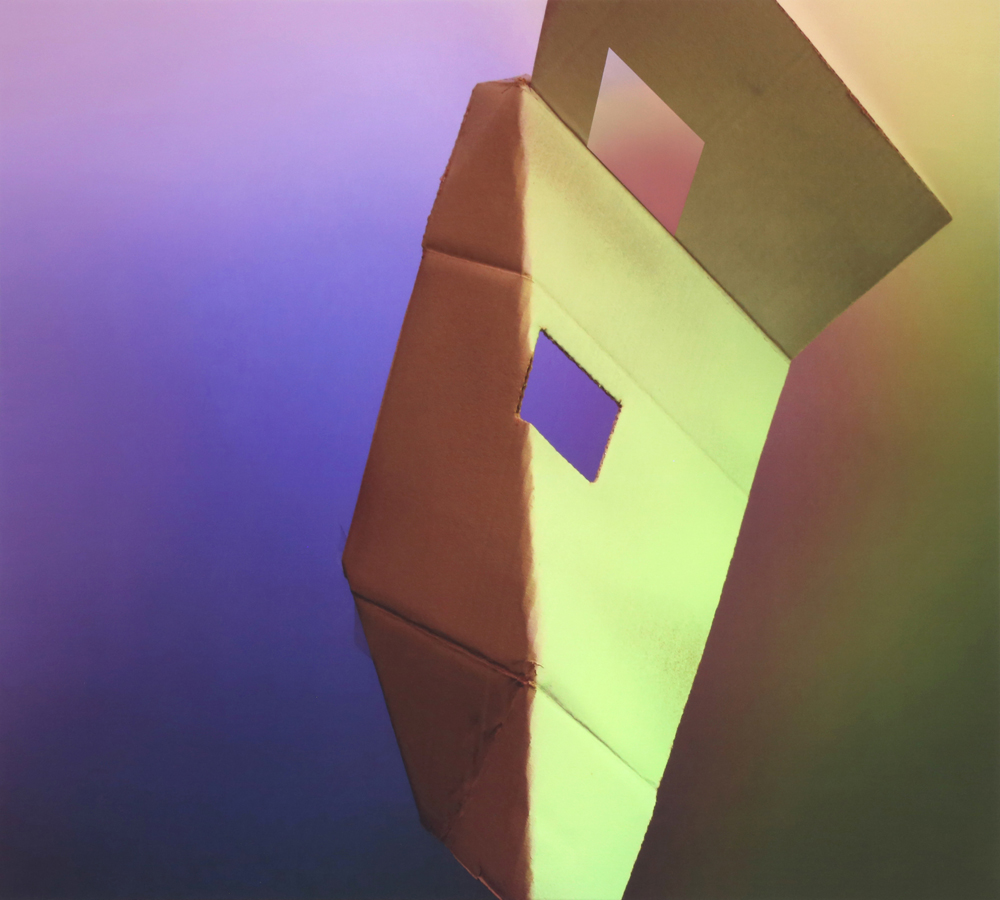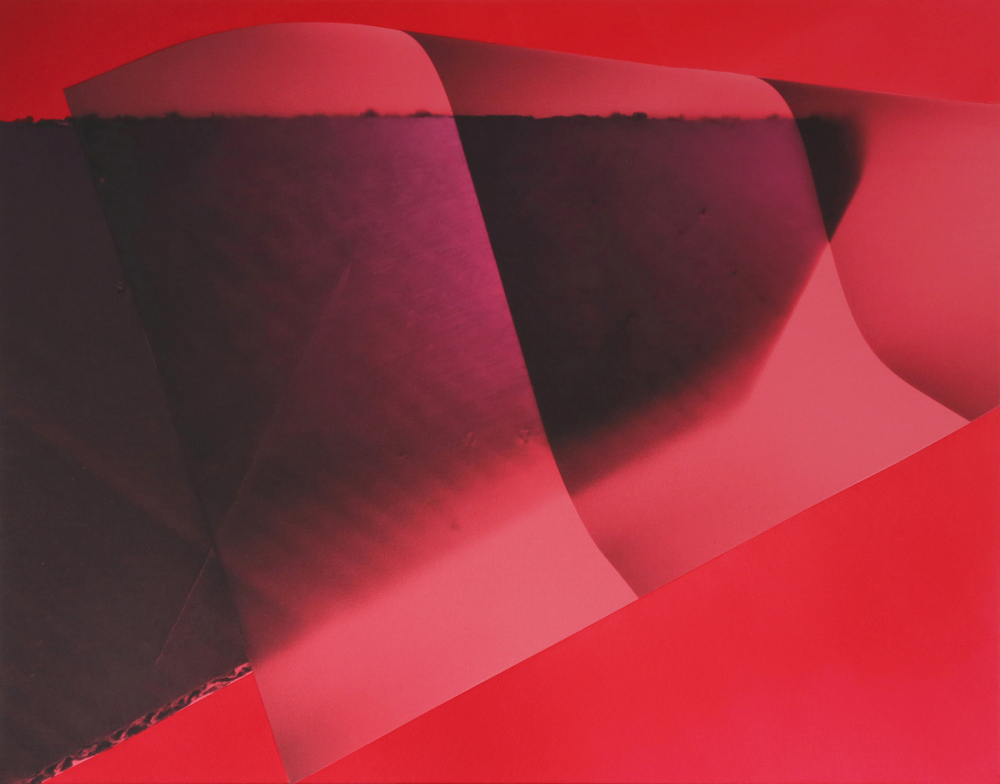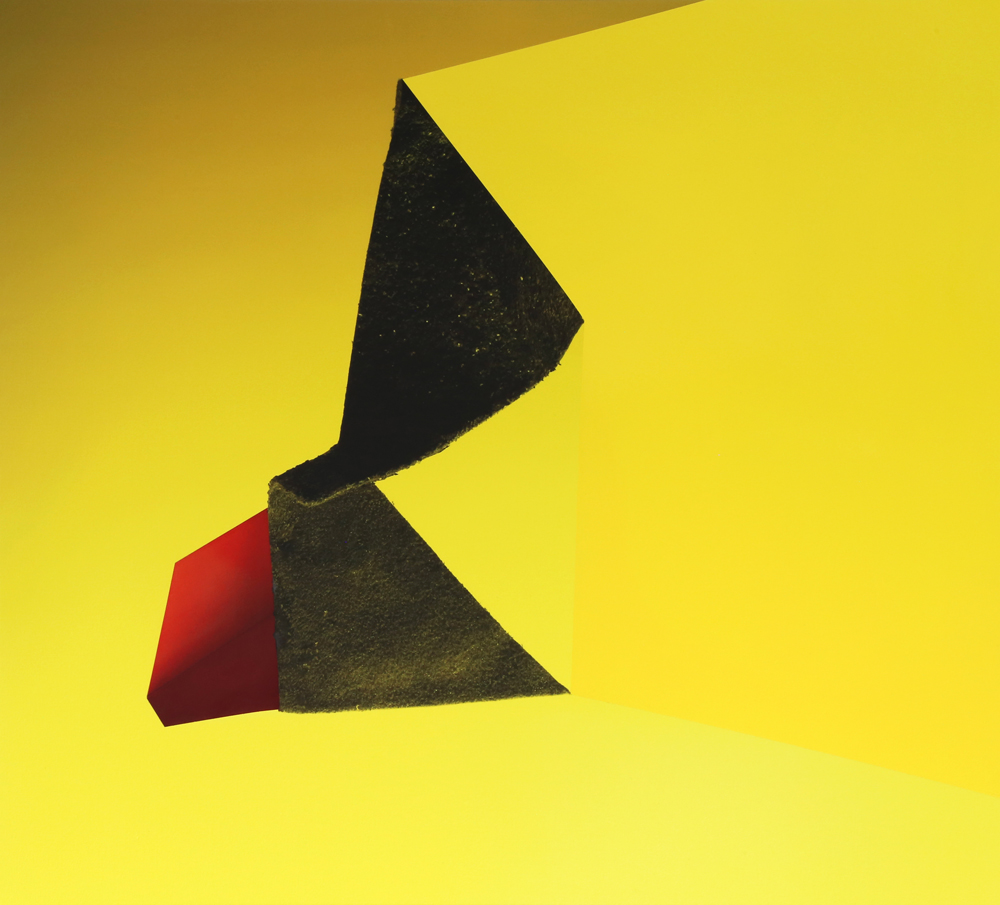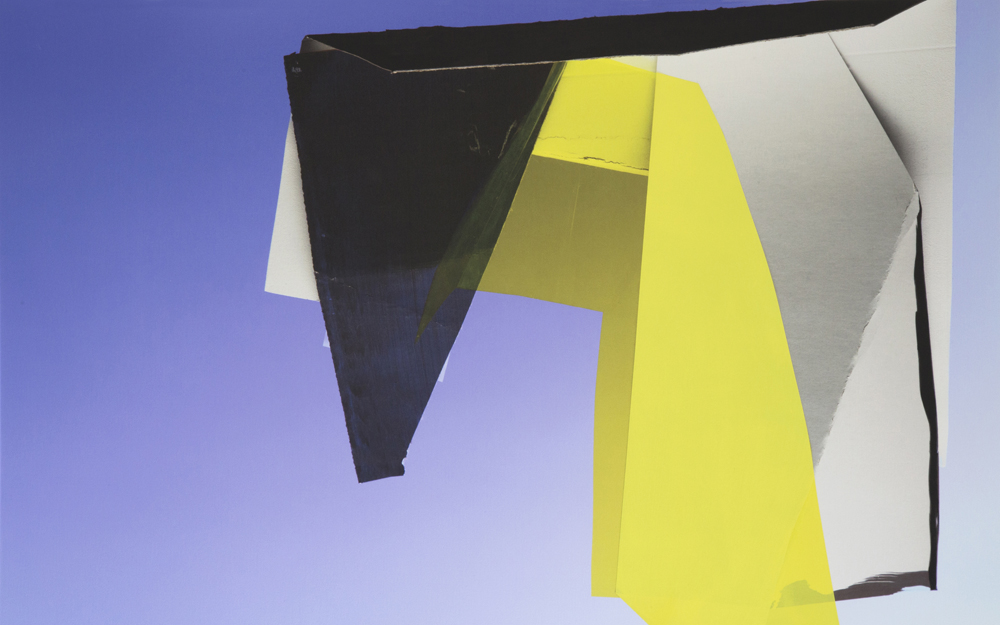Kate Petley: The Very Thing
Artist Kate Petley is opening the exhibition, The Very Thing, at the Von Lintel Gallery on March 14th. Kate’s approach to her art making collapses “the boundaries between sculpture, photography, and painting.” Starting with ordinary materials, she photographs small constructions and then prints the enlarged image on canvas, providing the potential for interventions with a variety of materials. The addition of paint transforms the surface and creates new perceptions of space. An interview with Val Patterson about her process and practice follows.
Kate Petley reframes the history and meaning of the luminous surface to include the influence of the ever-present backlit computer screen. Emphasizing the transformation of common materials like cardboard, she prioritizes the relevance of positive change.
Sculptures made of castaway materials like cardboard are placed within intensely lit environments and photographed, with texture and pattern amplified to mythic proportions as the image is transferred to canvas. Forms float, lean, and impose themselves into atmospheric backgrounds, projecting like dramatic characters.
Selected areas are hand painted, increasing the slippage between mediums. There is such a deep integration of processes that they become lost in one another. Overturning media hierarchies, photography and painting are fused together in a shifting relationship made possible by technology.
Petley has solo exhibitions in 2020 at VonLintel Gallery in Los Angeles and the University of Colorado Art Museum (CUAM), curated by Director/Curator Sandra Firmin. Additionally, Petley has curated a nine-artist exhibition for the Boulder Museum of Contemporary Art, opening in the Fall.
Her work has been exhibited at MCA Denver, the Museum of South Texas, the Nicolaysen Museum, Fotofest Houston, the Martin Museum at Baylor University, Museum of the Southwest, the Arlington Museum of Art, and other institutions. Petley has been featured in twenty-seven solo exhibitions and has completed numerous public commissions and installations. She participated in PhotoIreland 2017 and is a Ucross Foundation Fellowship recipient. Awarded an NEA Rockefeller Foundation Grant, other residencies include the Mayer of Munich Architectural Art Glass studio in Germany and Platteforum Denver.
Collections include the Museum of Texas Tech University, the City of Houston, Fidelity Investments Boston and Denver, Stanford University, Morgan Stanley San Francisco, the Federal Reserve Bank Kansas City, and Polsinelli LLC in Dallas, Houston, Chicago, and Denver (Catalogue).
Born in New York, Kate lives and works near Boulder, Colorado.
The Very Thing
Transformation lies at the heart of my work, for the materials and the content. Common materials like cardboard are used in a process that collapses the boundaries between sculpture, photography and painting.
Small sculptures are roughly assembled, placed within an intensely lit environment, and photographed. In transferring the photograph to canvas, increased scale amplifies detail and elevates the shapes to near-mythic proportions. Forms float, lean and impose themselves into atmospheric backgrounds, projecting like dramatic characters. A distinct presence is implied, one that often seems personal. A sense of contamination lingers from the blurring of photography and painting, increasingly fused together in a shifting relationship made possible by technology. Perception is jerked back and forth as the viewer resolves the physical differences between the illusionistic forms and the painted areas; the super flat surface renders both paint and image at the same level visually. It is conceptually important to me that these images are created entirely in-camera, not in the computer.
By presenting new interpretations of a luminous surface, references that include the ever-present backlit computer screen are broadly inserted. The long arc through history is filled with methods and reasons to approach a radiant surface. I want to introduce a positive experience, driven by a light-based image, that suggests a space for absorption. I question if and how this might be accomplished today.
Folding psychological influences into the process, I repackage their effects to hint at the wonder of the everyday world and the relationships it contains.
Kate Petley
2020
Tell us about your growing up and what brought you to Photography/Art.
I was born in New York and grew up in Texas, both in a small rural town and in Houston, where I began as an artist working in sculpture. Found materials dominated my large-scale sculptures at that time, and my current work also uses common found materials but in a very different way. There has been a progression over time that increasingly emphasized light, including a long period when I worked with resin and transparency. My reasons for being an artist vary as my life changes but generally speaking, transformation lies at the heart of my work, both conceptually and with respect to the materials.
Did your practice always combine Photography with other mediums?
My use of photography was gradual and began in collaboration with other artists and photographers, including the conversion of an abandoned cottage to a camera obscura. I realized that the effects I was searching for could only be achieved photographically and this acknowledgment forced a shift in my process. I had to fully accept the combinations that are necessary. It doesn’t feel relevant to separate the mediums. Certain expectations come into play when these descriptions are called in and I like to break them down.
The surface of my canvases is both photographic and painted, throwing the viewer into perceptual limbo as they resolve what’s happening. Because the surface is super flat, it isn’t always easy to tell what is paint and what isn’t.
Can you share a bit about your process?
A small sculptural assemblage is made from ordinary castaway materials like cardboard and tape, deliberately selected because they lack a distinct narrative. The sculpture is placed into an intensely lit environment and photographed. The image is created entirely in-camera, including the color. Transferring the image to canvas, the increased scale reveals recognizable patterns and texture.
The provisional sculptures resemble dramatic characters that assume a presence verging on the heroic. To me, this is almost funny considering the materials. The shapes lean and float within atmospheric backgrounds. Internally, my process is both intuitive and analytical. I’m pushing for something I haven’t seen before. I want to be surprised and I have to be comfortable with discomfort to get there.
What are some of your inspirations?
I’m interested in many different types of artwork but feel that my own work belongs to a long lineage of artists concerned with the luminous surface as a space for absorption. This is challenging since the ever-present backlit computer screen, the dominant luminous surface of our age, usurps our attention and influences the reading of detail. Considering this, what kind of experience can I create and what is the range of its effect?
Color is important to your work. Why?
I want the color to take on more responsibility and represent the level of saturated light that exists in the original arrangement with the sculpture. There is an undeniable physical reaction to intense color; some people love it and others are pushed away by certain colors. This fascinates me. My work tends toward an overall monochrome and some are more subdued. I’m looking for experiential space and color impacts that in endless ways. I’ll never find them all but the pursuit keeps me going.
You are now based in Colorado. Does the natural landscape influence your work?
When I moved to Colorado, the piercing white light found at higher elevations was startling. It feels stark and penetrating. The light impacted me more than the landscape, but there is a rhythm or a power in the mountains that stays with me. I do respond to the tension found at the margins of the natural environment and the urban centers, but that isn’t unique to Colorado. Now that I think about it, that tension is crucial to the outcomes I’m looking for in my work but I’m not certain that it stems from my surroundings. Surely it also comes from within my own very restless nature.
I really love your piece “To Be Sure” and can’t wait to see it in person. Is there a story behind it?
While there isn’t a particular story behind this piece, there is a definite presence to the central form and the painted area that accompanies it. The rough materials I used to construct the shape include a heavily painted and cut-up towel, which somehow manages to convey a rather elegant stature considering its humble origins.
Any words of advice you can share with our readers on what has helped you on your creative journey?
I’m not in a position to advise but there are many conflicting experiences involved in living a creative life, positive and negative. Both are important. We have to protect our health and vitality to keep making the work, and we clearly have to protect the work itself. Building real relationships and making authentic work is crucial. None of it is easy but I can’t live any other way.
Anything new you’re working on now that you’d like to talk about?
I have a solo exhibition opening June 4th at the University of Colorado Art Museum on the main campus in Boulder. ‘Staring Into the Fire” will include new work and a site-specific installation.
The installation revisits an earlier collaboration but takes a completely different turn, beginning with a version of the Exquisite Corpse, first invented in 1925 by the Surrealists. I sent the collaborating photographer a box of my small sculptures, with the only requirement being that the final photograph is black and white. I’ll adapt that photograph to fill the Project Space inside the museum, resulting in an immersive experience for the visitor…. Like being inside one of my canvases.
I chose not to photograph the sculptures myself because I wanted to see what would happen if I gave up that authorship, using what someone else created instead. That element of risk influences the outcome and I’m excited to see how the students and visitors respond.
What’s next for you in 2020?
‘The Very Thing’ opens at VonLintel Gallery in Los Angeles on March 14th at the Bendix Building downtown. This is my first solo exhibition with the gallery, which now represents my work. Opening Reception 5:00-8:00 PM Everyone is welcome, I will be there.
I’m part of a 3-person exhibition with Orth Contemporary in Tulsa titled ‘On Screen, Off Screen: Contemporary Abstraction and Technology’, opening May 7th at the gallery’s new space in downtown Tulsa.
CU Art Museum will present my work in a solo exhibition opening June 4th, curated by Executive Director/Curator Sandra Firmin. ‘Staring Into the Fire’ will include new canvases and the installation mentioned here.
Manneken Press will publish our fourth series of monoprints using photogravure to transfer my photographs to the plates.
‘The Stubborn Influence of Painting’, opens this Fall at the Boulder Museum of Contemporary Art and features nine diverse artists from the US and London. Four of the artists are photographers. This is my first curatorial project.
Posts on Lenscratch may not be reproduced without the permission of the Lenscratch staff and the photographer.
Recommended
-
Earth Week: Aaron Huey: Wallpaper for the End of the WorldApril 26th, 2024
-
Earth Week: Casey Lance Brown: KudzillaApril 25th, 2024
-
Tara Sellios: Ask Now the BeastsApril 6th, 2024
-
ALEXIS MARTINO: The Collapsing Panorama April 4th, 2024
-
Emilio Rojas: On Gloria Anzaldúa’s Borderlands: The New MestizaMarch 30th, 2024

